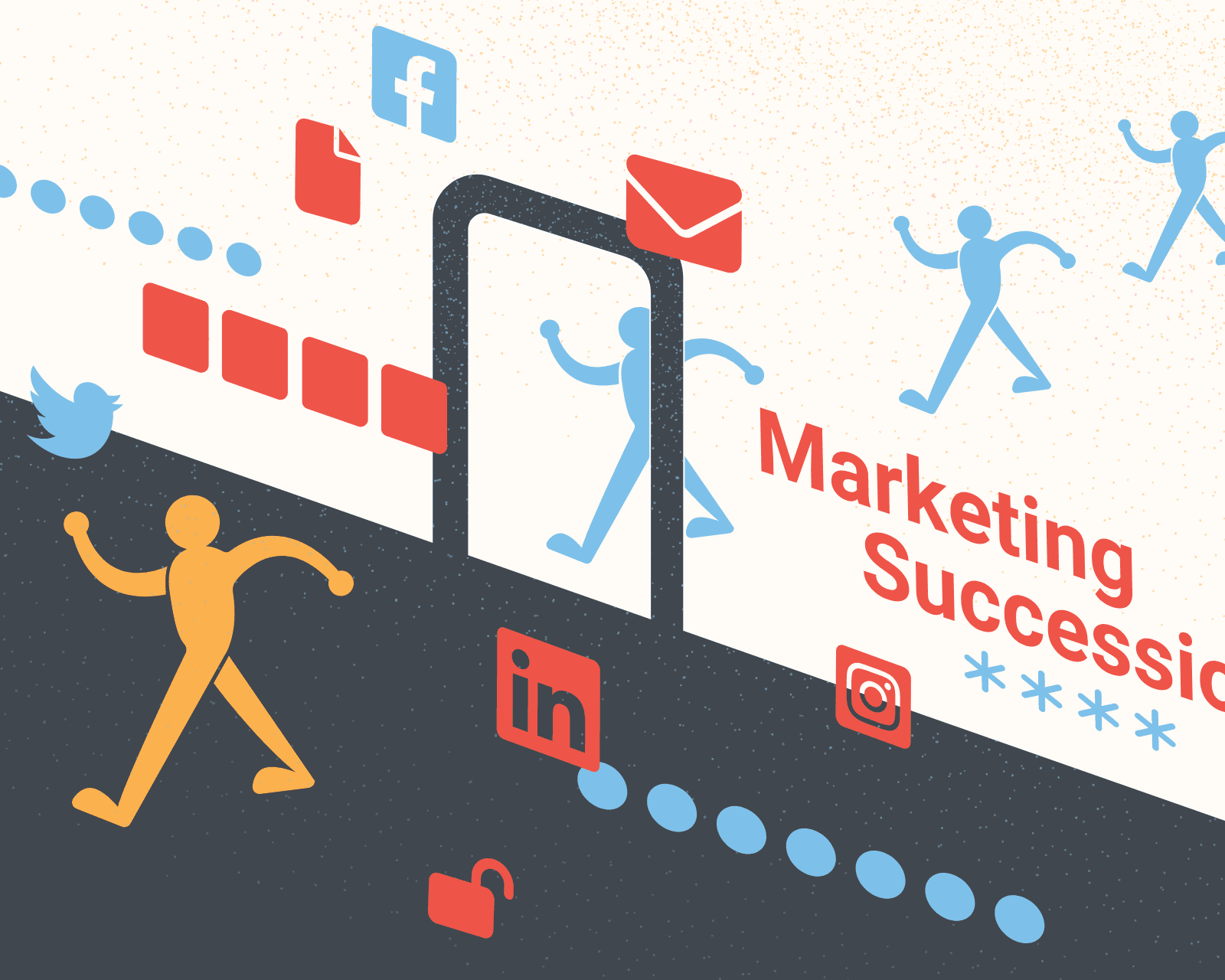Marketing people come and go. When they leave, make sure you’re not the one stuck trying to piece together usernames and passwords for all of your marketing operations. We’ve outlined a few things you can do right now to lessen the disruption when your marketing team inevitably goes through a transition. If it’s too late and you’re already locked out, we have also some tips to get you back up and running.
You’d be surprised how many different online services are used by companies to maintain a modest marketing plan. Even businesses with little to no consistent marketing efforts can have dozens of logins that need tracking. The number of digital marketing products has exploded in recent years. In fact, ChiefMartech recently counted over 8,000 marketing apps in their annual product landscape.
The problem is that most of these platforms require an email address and password to gain access, and 2-factor authentication only compounds the problem. What’s one to do when you’re not sure whose email was used to set up a service, let alone the password.
Plan Ahead
The best time to get organized is while you have access to all of your marketing software.
1. Document the platforms you use
Create a simple spreadsheet of all the marketing platforms you use. We like to use Google Sheets because it’s cloud-based, secure, and shareable with your team. Use columns to collect data on the service, login links, profile names or handles, login usernames, passwords, payment methods, and recovery emails.
It may take time to identify all of the services you use. Here are a few common ones:
- Website DNS Provider: GoDaddy, Bluehost, Network Solutions, Wix, Squarespace, etc.
- Website Host: GoDaddy, Bluehost, Network Solutions, Wix, Squarespace, etc.
- Website Support Tools: Google Analytics, Google Search Comnsole, Google Tag Manager
- Social Media: Facebook, Twitter, Instagram, Pinterest, Linkedin, Youtube
- Location Listings: Google My Business, Yelp
- CRM and Email Marketing: Hubspot, Constant Contact, Mailchimp
2. Establish a general-purpose email for marketing
Establishing a general-purpose email to use as a login and recovery email for all of your marketing software makes the transition very easy when someone new needs access. Your IT team can establish an email like marketing@yourdomain.com to be used for all of your online marketing accounts. The best way to use this email address is to set it up as a group distribution, meaning that it forwards any messages to a select group of users within your organization. Users can be added or removed at any time and everyone on the distribution sees all of the messages. This provides an added layer of security because you can see if someone is attempting to change login credentials.
3. Use the new general email as the master login
If the service allows for multiple users, make sure to use this login for the highest level “admin”. Then add specific other users with an appropriate permissions level. This ensures that you’ll be able to gain access to remove users whenever necessary.
4. Assign unique passwords
Each platform can and should have a unique password. In addition to changing your password every few months, you should also change the passwords whenever someone who previously had access to the marketing@ email leaves the company.
5. Have a documented process for staff transitions
When someone leaves the organization, it should be easy to remove their access to marketing platforms. Using the spreadsheet and master login, go sequentially through each platform and remove that individual’s access. If the individual leaving also had access to the master spreadsheet, also update the password on each platform used to log in as marketing@
6. Be careful if using 2-factor authentication
Two-factor authentication means that a website will require a second form of authentication if the person logging in is doing so from an unrecognized computer. If you use online banking, you’re probably used to this process.
While two-factor authentication can be great for individuals, it can be a headache for businesses. Using the main line of a business usually does not work because office phone systems can not receive text messages. Similarly, using an individual’s personal phone number creates the same transition problem we were trying to avoid.
We’ve found the best solution is to set up a google voice number. Similar to the methodology used for the marketing@ email distribution, the Google Voice number can be forwarded to an individual’s phone number and easily redirected later on if necessary. Just make sure to add the two-factor number used to the master spreadsheet of credentials.
Already in a pickle?
Don’t give up hope. There are a few things to try.
1. Re-activate an ex-employee’s email
Your IT person can temporarily restore a former employee’s email address and give you access to that inbox so you can try using the “forgot password” feature on the service website. However, this only works if you know the email that was used.
As a fallback, your IT person may be able to help you monitor a catch-all email address. If available, this special mailbox collects any messages sent to your domain that don’t match an active email address. If a website has a “forgot email” link, there’s a chance you may be able to recover access using this process.
2. Call the support line with your billing information in hand
If you’re locked out of a paid service, you may be in luck. Call their billing support line and explain the problem. There will be a few hoops to jump through, but they will often help you out. Having detailed information on your payment method and payment history will be the way they authenticate you.
3. Create a new account
It’s easy to get caught up in the quest to gain access to an account. Take a look at the amount of content, followers, or time invested in the tool and do an honest assessment of how hard it would be to start from scratch. Sometimes it’s easier to abandon an account containing outdated or minimal content and build from scratch. This is especially common on social media platforms where it’s easy to create a new profile and report the old inaccessible account as inactive.
Conclusion
Keeping track of how you access your business’s digital marketing tools is critical. A little bit of organization now will save you a ton of time and frustration down the road. This process is also very handy when working with an outside organization, such as a marketing agency. Even if you’re not using marketing technologies today, chances are you will be sometime in the future. Get organized and embrace the ever-changing landscape of digital marketing.
And heaven forbid you ever lose your GoDaddy login information. We had a client who had to submit someone’s death certificate – and still got denied access!

